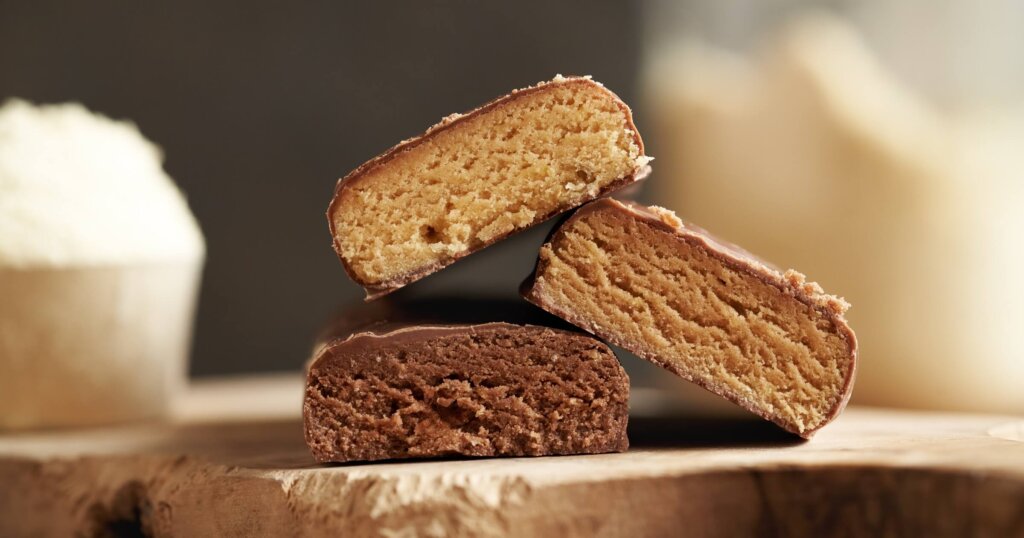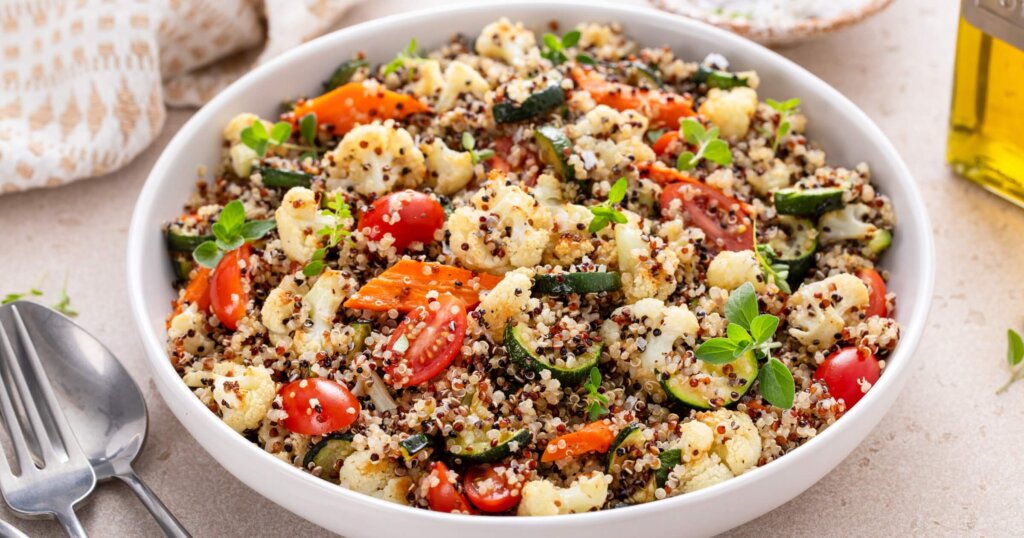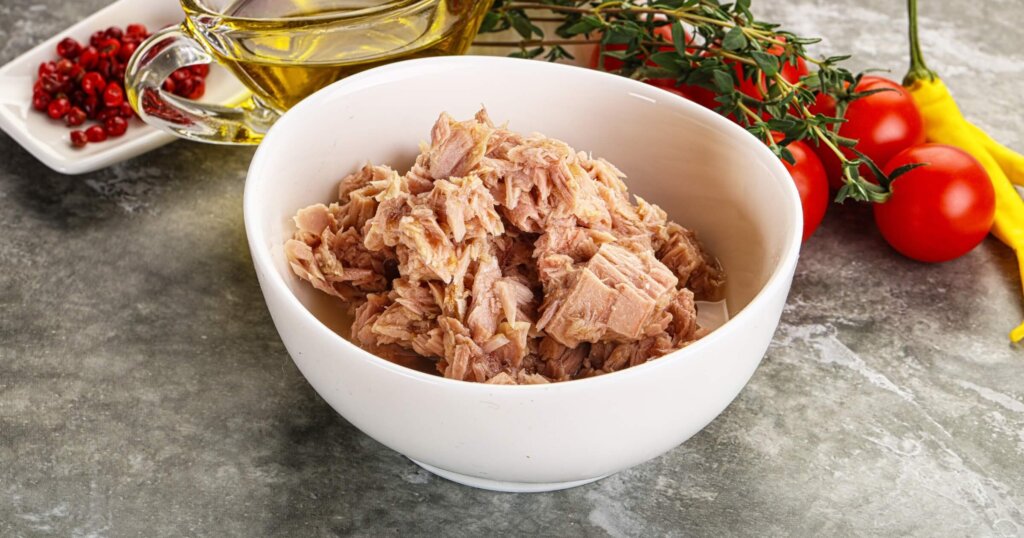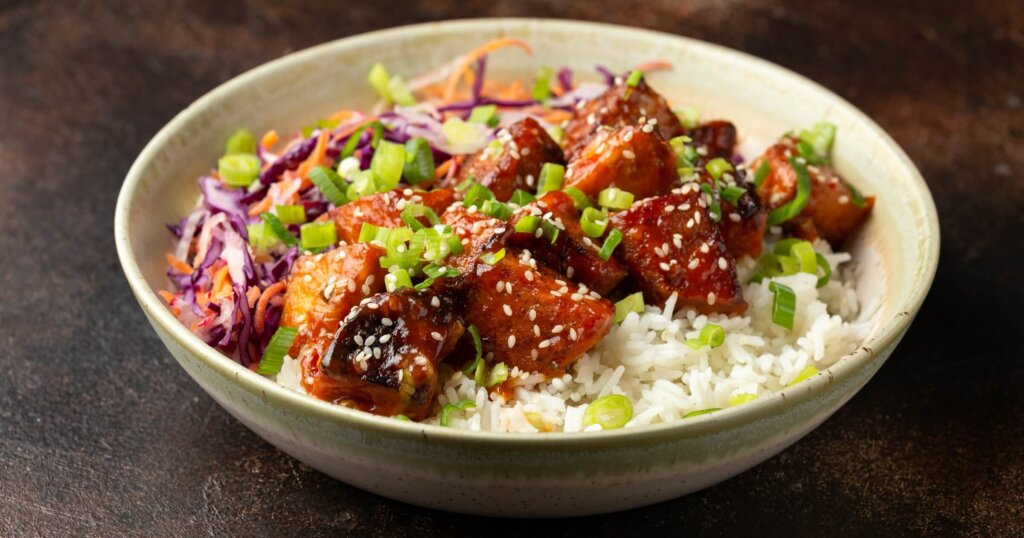Getting enough protein intake for muscle gain is key for energy, weight management, and muscle growth, especially if you have a physically demanding job or active lifestyle. If you’re trying to figure out how to increase your protein intake without completely changing your eating habits, there are simple ways to add more protein-rich foods to your routine. Our list of suggestions includes ten easy ways to increase your protein intake naturally, such as using plant-based proteins or adding Greek yogurt to the mix.
1. Include eggs in your breakfast
Starting your day with eggs is one of the easiest ways to increase your protein intake. Whether you like them scrambled, hard-boiled, or added to toast or wraps, eggs are a great way to get quality protein first thing in the morning. They’re also budget-friendly, quick to cook, and packed with health benefits, including essential amino acids your body needs for muscle growth, energy, and injury recovery.
- One large egg contains about six grams of high-quality protein and essential amino acids.
For simple breakfast ideas, check out our list of 10 high-protein breakfasts.
2. Stock up on protein bars for quick snacks

Photo courtesy of https://www.shutterstock.com/
Protein bars are a convenient way to get a protein boost during a busy day, especially if you’re on the move. Throw one in your glove box or lunch bag so you always have a quick option on hand. When choosing a bar, aim for at least ten grams of protein with low added sugar and minimal saturated fat. These high-protein snacks can help curb hunger between meals and support your daily protein needs.
- A 2022 study in Nutrients found that high-protein snacks helped improve satiety and reduce overall calorie intake in healthy adults.
3. Add Greek yogurt or cottage cheese to meals
Greek yogurt and cottage cheese are two protein-rich foods that fit easily into both sweet and savory meals. Mix them into smoothies, use them as a base for dips, or stir them into pasta dishes for a creamy texture without the extra saturated fat from heavy cream. Both are high in casein, a slow-digesting protein that helps keep you full longer, and they’re full of essential nutrients like calcium and vitamin D.
- One cup of Greek yogurt contains around 20 grams of protein, making it a great way to meet your daily intake goals without relying on meat.
4. Choose high-protein carbs like quinoa or farro

Photo courtesy of https://www.shutterstock.com/
Swapping out low-protein carbs like white rice for whole grains such as quinoa or farro is a simple way to increase your protein intake naturally. Quinoa is especially unique among plant sources because it’s a complete protein, which means it contains all nine essential amino acids. These grains also have fiber, iron, and B vitamins, making them a more nutrient-dense option for balanced meals.
- Quinoa contains about 8 grams of protein per cooked cup and supports health goals like weight management and heart health.
5. Use protein powder in smoothies or oatmeal
Adding a scoop of protein powder to your morning smoothie or oatmeal is one of the easiest ways to boost your protein content without much prep. Powders blend well into baked goods, protein shakes, or overnight oats and can help you hit your protein goals, even on busy days. Whether you choose whey, casein, or a plant-based option like pea protein, it’s a flexible way to support muscle growth and keep up your energy levels throughout the day.
- Depending on the type and brand, most protein powders offer between 15 and 25 grams of protein per scoop.
6. Keep canned tuna, salmon, or chicken on hand

Photo courtesy of https://www.shutterstock.com/
Canned lean meats like tuna, salmon, or chicken breast are a smart, shelf-stable way to get more protein into your day. They’re perfect for quick lunches, meal prep, or emergency snacks. Just open a can and add it to a wrap, salad, or eat it straight with whole-grain crackers. These animal sources are also rich in essential nutrients like omega-3 fatty acids (especially salmon), making them a great way to support heart health and physical performance.
- A single can of tuna provides 20 to 30 grams of lean protein, depending on the size and brand.
7. Snack on roasted chickpeas, nuts, or seeds
When you need a quick, satisfying bite, roasted chickpeas, nuts, and seeds check all the boxes. They’re crunchy, easy to pack, and offer a solid combo of protein, fiber, and healthy fats to keep you full and energized. These high-protein snacks are especially handy for active adults who need fuel throughout the day, at the gym, or during a long commute.
- One ounce of almonds contains about six grams of protein, while a half cup of roasted chickpeas delivers around seven grams. Pumpkin, sunflower, chia, and hemp seeds are also great options for added variety and extra nutrients.
8. Use plant-based protein sources like tofu, tempeh, or edamame

Photo courtesy of https://www.shutterstock.com/
Soy-based foods like tofu, tempeh, and edamame are excellent plant proteins that make it easy to eat protein without relying on meat. They’re complete proteins, meaning they contain all nine essential amino acids, and they work well in a variety of meals, from stir-fries to salads to wraps. These options are also rich in nutrients like iron, calcium, and fiber, all important for supporting a balanced diet and overall health.
- Half a cup of tempeh has around 15 grams of protein, making it a perfect choice for muscle growth and recovery.
9. Try protein-fortified products (milk, pasta, bread)
One of the best ways to increase your protein intake without changing your eating habits is by swapping in protein-fortified versions of foods you already love. These options can help you stay on track with your daily protein while still enjoying familiar meals. From milk and yogurt to pasta dishes and sandwich bread, there are plenty of everyday staples that now come with added protein.
- Some high-protein breads pack more than 10 grams of protein per slice, making them a great way to upgrade your high-protein diet with minimal effort.
10. Add hummus or nut butter to snacks and meals
Adding hummus or nut butter to your meals is a simple way to sneak in extra protein along with healthy fats and fiber. Try spreading almond butter on whole-grain toast, or dip raw veggies in hummus for a creamy, satisfying boost. These plant-based options also have important nutrients like Vitamin C, iron, and magnesium to support heart health and energy levels.
- Two tablespoons of peanut butter provide approximately eight grams of protein, making it a good source for anyone looking to increase protein intake throughout the day.
Frequently asked questions about protein intake
How can I raise my protein levels quickly?
Eat a high-protein meal or snack like hard-boiled eggs, Greek yogurt, cottage cheese, or a protein shake with chia seeds. Spreading out protein consumption throughout the day is the best way to support muscle growth and daily intake goals.
Are two eggs enough protein for a day?
Not quite. Two large eggs provide about 12 grams of high-quality protein, but most healthy adults need between 0.8 and 1.2 grams of protein per kilogram of body weight, depending on their activity level. That usually adds up to around 50–70 grams daily.
How much protein is in peanut butter?
It’s a moderate source. Two tablespoons of peanut butter offer about 7–8 grams of protein, but they also come with a high amount of fat. It’s best to include it as part of a balanced meal with other protein-rich foods.
What is the best protein supplement?
Whey protein is a popular choice because it’s absorbed quickly and contains all the essential amino acids your body needs. That said, plant-based options like pea, soy, or blended plant proteins are great alternatives for anyone who’s vegan or avoiding dairy.
Final takeaways
You don’t need to overhaul your diet to get more protein. A few smart swaps, some well-timed snacks, and a little bit of planning can make a big difference. If you’re working long days, staying active, or just trying to keep your energy up and recover faster, these everyday tips make it easier to hit your protein goals without the stress.
Looking for easy ways to add protein to your meals? Check out our popular reads including High-Protein Sandwich Recipes and Protein-Packed Chocolate Desserts for tasty, satisfying ideas to help you reach your protein goals.
And if you haven’t already, subscribe to our newsletter for weekly wellness content made for hardworking pros like you.


